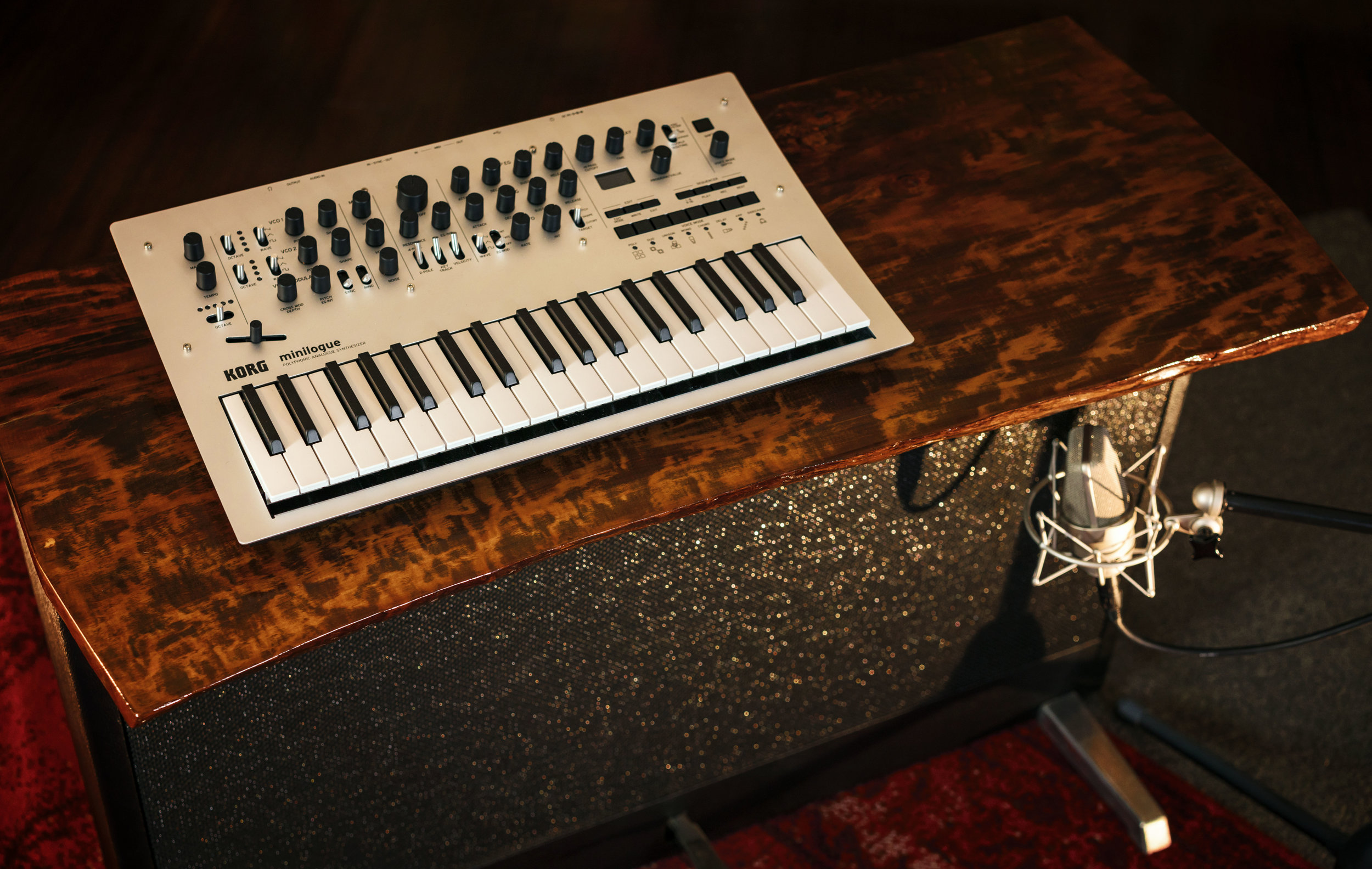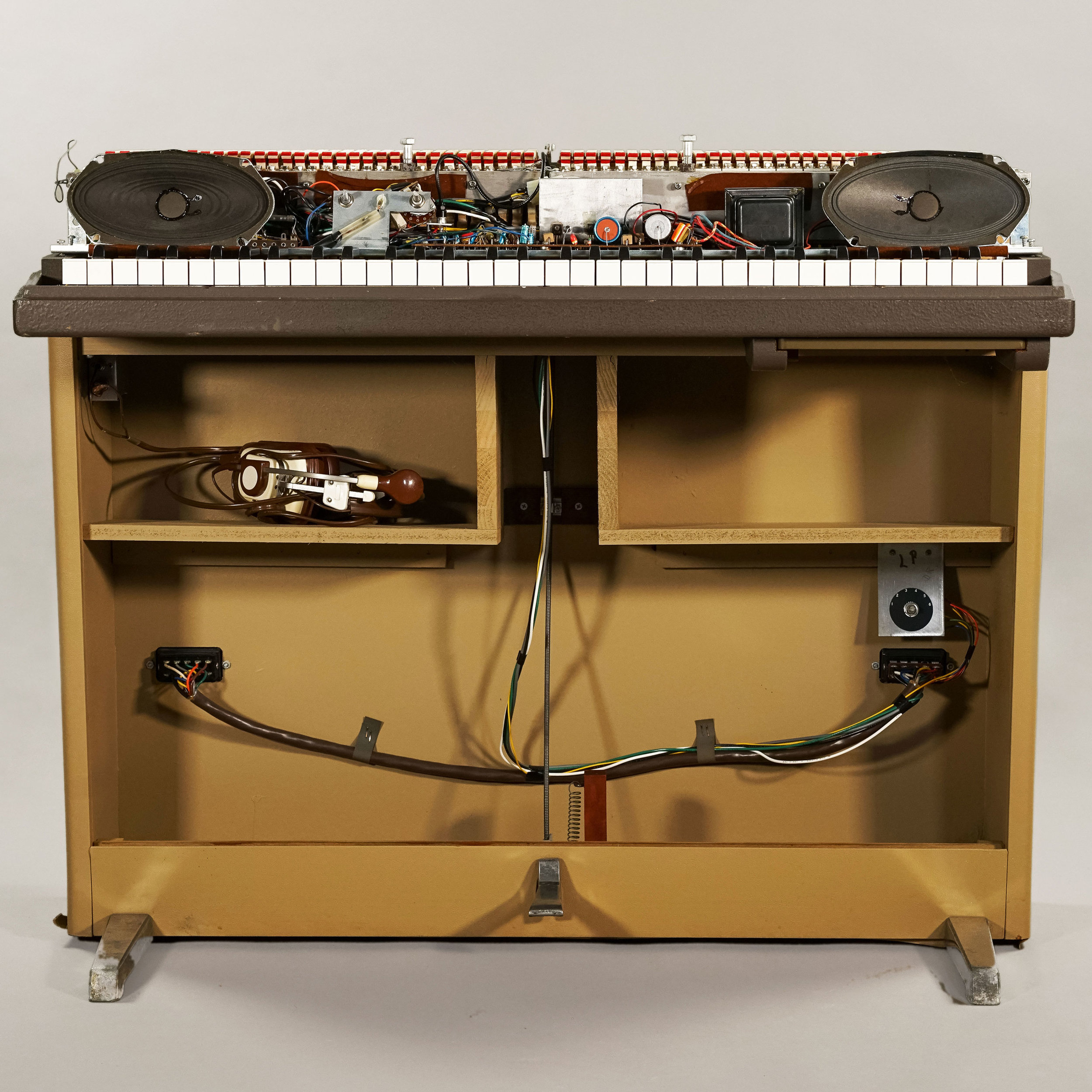Do I need a preamp for recording my synth?
Short answer- ‘need’ is a strong word, but your synth tracks would certainly benefit greatly from a preamp. Simply put, adding a preamp to your synth lines will make them come through a little stronger and have more impact on the mix. Any preamp, whether they be solid state or tube are designed to make your signal louder.
We have done some A/B testing with one of our favorite analog synths, the Korg Minilogue, and found that a preamp or external tube amp helps the synth to stand out. It goes without saying that you will be using a wide range of synth voices so where and when a preamp adds the most will vary.
Should I repair or replace my Wurlitzer 200 or 200a amplifier?
After restoring Wurlitzer electronic pianos for over a decade, we have seen amplifiers in varying condition, ranging from pristine to biohazardous. Sometimes we repair the amps, and sometimes we just replace them.
If your Wurlitzer 200 (200a, 203, 206, 206a, 210 or 214) is starting to crackle, buzz, hum, or pop, it may be time to take a look at it’s amplifier. And having a fully functional amplifier in your Wurly is essential to keeping it happy: after all, it is an electronic piano.
What keyboard amp should I choose?
If you are psyched about your new keyboard or synth and need a way to amplify it other than going direct to a PA, there are options for you! Amplifiers come in many shapes and sizes and have varying features. If this is the first (or only) amp you are purchasing for your keyboard, it is first a good idea to decide what your needs are and what you will be using it for most.
Here are some uses you might have for a keyboard amplifier.
In Restoration: Dynavox Rebuild
This Dynavox was originally a so-called widowmaker amplifier. We completely rebuilt it with all-new components, installed a power transformer, and revised the circuit to eliminate the obsolete widowmaker tubes. It is now a safe, functional 1.5 watt practice amplifier. It can be used alone for bedroom practice, or plugged into a second amp for interesting tube overdrive tones.
Here’s some details on how we redesigned this amp.
What is a widowmaker amplifier?
A widowmaker amplifier has no power transformer or fuse. Instead, the two-prong, non-polar power cord is wired directly to the rectifier tube. It is very unsafe, because under even minor failure conditions (such as a shorted capacitor or even - in some models - plugging the power cord in backwards), the mains voltage might end up on the guitar strings and the user will be shocked/electrocuted.
On the plus(?) side, power transformers are expensive so widowmaker amps could be manufactured and sold at a lower price. This ensured that every aspiring guitarist in America could own a low-fi death trap if that’s what they really wanted.
In Restoration: Vintage Sears Hi Fi Amp
This vintage tube hi-fi-turned-guitar amp is one of our favorite past restorations.
Steps to Restoring a Vintage Wurlitzer Keyboard
How do we restore a Wurlitzer electronic piano? Here’s a list of all the issues we commonly address.
Allen & Heath GS3: Circuit Photos
This Allen & Heath GS3 - currently in use in the studio - is an analog mixing console from the mid-90s.
Allen & Heath GS-3: Cleaning the Knobs on a Vintage Console
When we received our Allen & Heath GS3, it was caked in dust but otherwise in great working condition. We wanted it to sparkle like the technological marvel it was when it was released in 1994, so we took it apart and gave it a deep clean.
Wurlitzer Quick Reference Chart: Things We Included, and Things that We Didn't
Not going to lie: it was hard to narrow down the many variations of a Wurlitzer to create our Wurlitzer Quick Reference chart. We decided to do a quick write-up of all the subtleties that the graphic glosses over. And - let’s be clear - everything about that chart is a subtlety. Every Wurlitzer has that iconic Wurlitzer sound, and any model is capable of being restored to a highly playable, musical state. Amps can be modded for aux outputs and vibrato. Noise can be minimized. Console models can be put on legs. Portable models can be attached to consoles. (We have so many 206 bases. Please help us.) The chart is mostly about where you want to start, and how much work you want to put into your Wurlitzer to make it an exceptional piece of gear in the age of digital recording.
Anyway, here’s a few notes on the chart about the things we included, and the things we left out.
Choose the Right Wurlitzer Model with our Quick Guide to Wurlitzers!
Having trouble deciding which Wurlitzer model is right for you? Take a look at our handy infographic!
This infographic is an at-a-glance guide to the features of common Wurlitzer models. All models of Wurlitzers are excellent instruments, and with the right restoration any one of them can become a functional, professional piece of gear. However, all Wurlitzers were manufactured 40+ years ago, at a time when standards for recording were much different. And, anyway, professional musicians weren’t necessarily the most lucrative target audience: that would be schools, who bought keyboards six at a time. So, some features that would be standard today - such as an aux output - are absent from many models.
New photos of the live room!
We recently added a few more books to the live room at the studio, so we decided that it was a good time to take new photos.
Vintage Instrument Safety Guide
We’ve all heard that vintage amplifiers contain high voltages. However, there are other hazards that a collector should be aware of, particularly if your piece is sourced straight from a barn, shed, or other quasi-outdoor place. These risks can be managed by thorough cleaning and/or servicing. If you’re a DIYer, you should be aware of them so you can take adequate precautions, such as wearing gloves or using a respirator.
On Electronics Safety
At Tropical Fish, we are pro-electronics safety. We don’t want anyone to get hurt working inside a tube amplifier. At the same time, we hate to see people writing online who overstate the dangers of working on a tube amplifier. It really seems like certain factions want to discourage people from opening their amps up at all. This is a bad thing.
How to Remove Your Wurlitzer's Lid
Wurlitzers have a lot of moving parts under the hood, many of which can be adjusted to the player’s taste. Regulating your own Wurlitzer means that you can dial in the feel and touch-responsiveness that you prefer, making your keyboard truly your own. Of course, the first step to regulation is taking off the Wurlitzer’s lid.
What Not to Clean, or How to Avoid Destroying Your Wurlitzer
Wurlitzers are pretty forgiving. If you damage something, you can usually fix or replace it and get your keyboard up and running again quickly. But certain parts of your Wurlitzer are harder to source. Here's a rundown of all the things in your Wurlitzer that you should avoid breaking if at all possible.
How to Clean an Electronic Piano, Part II
If you’ve read Part I of our guide on how to clean an electronic piano, you’re familiar with the general technique. (Spoiler alert: Take everything out and then start cleaning.) In Part II, we’ll discuss how to tackle some more specific and serious messes.
How to Clean an Electronic Piano, Part I
Of all the repairs and restorations we do on vintage keyboards, cleaning them is by far the most important step. As much as we prefer recapping amps to scraping mouse poo out of them, cleaning is what transforms a gross piece of junk into a beautiful, functional instrument that will neither give you a disease nor make your studio smell like a thrift store. After all, excessive hum and out-of-tune reeds might be annoying, but they never gave anyone hantavirus.
What is a hand-wired amplifier?
In a hand-wired amplifier, each component is soldered to the next manually. The opposite is an amp where all of the components are mounted on a printed circuit board.
So which one sounds better? That’s a trick question. Hand-wiring and PCBs are simply styles of assembly. The ultimately quality of the amplifier depends on other factors, including layout, component quality, and of course the design of the circuit itself.
We chose to hand-wire the Vesper amplifier because we felt our amplifier demanded it. Here’s why.
About the 1981-1984 Late-Model Rhodes Mk II
The last iteration of the Rhodes Mk II, released between 1981 and 1984, is one of our favorites. Despite having more plastic parts than previous models of Rhodes, we find that keyboards of this period tend to have a dynamic, modern feel and excellent timbre. Plastic has a bad reputation these days - which it deserves - but this model of Rhodes is a rare case of plastic manufacture improving a product’s consistency and longevity.
Here’s a list of the details that are unique for the last years of the Mk II.

















